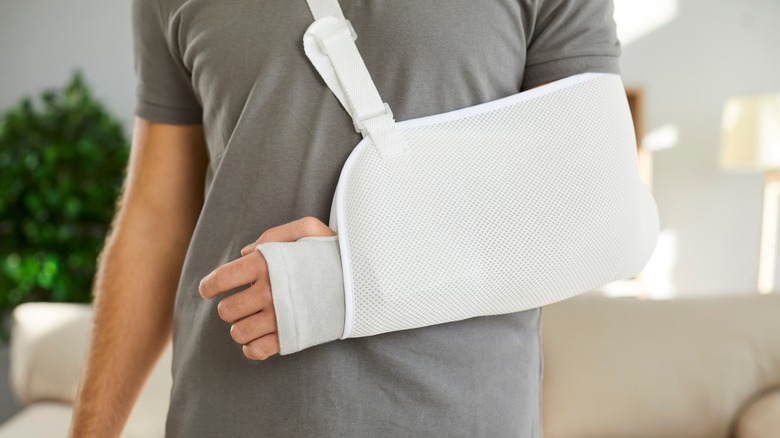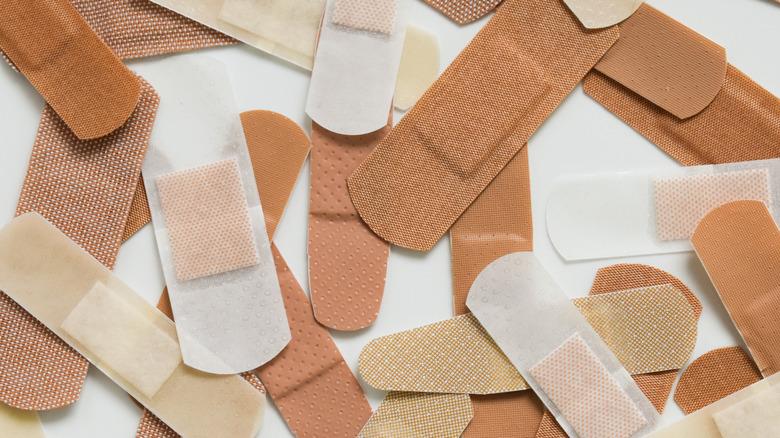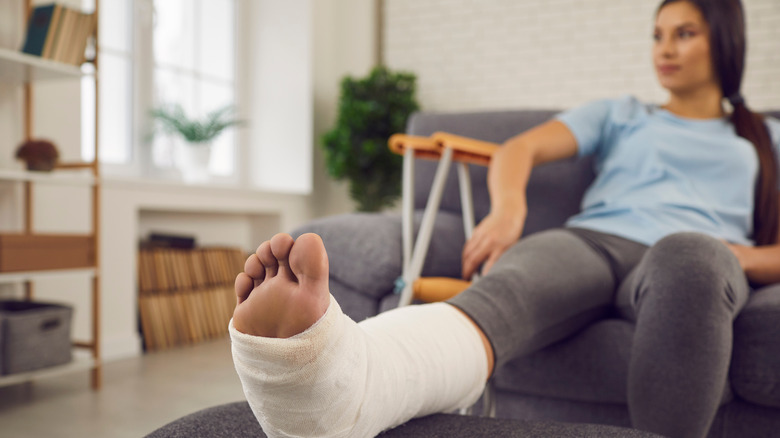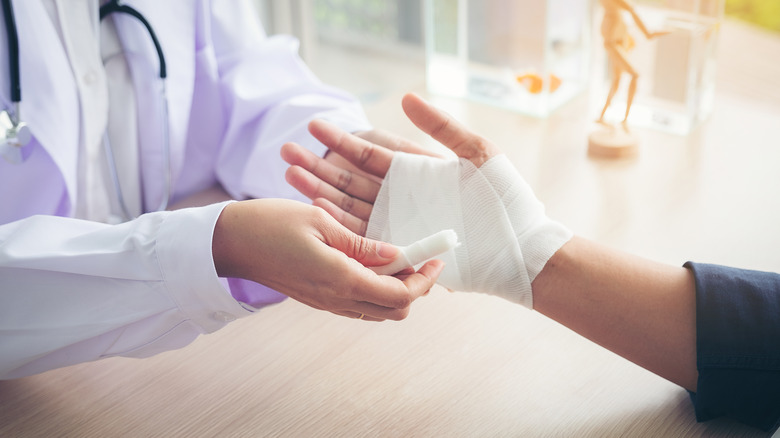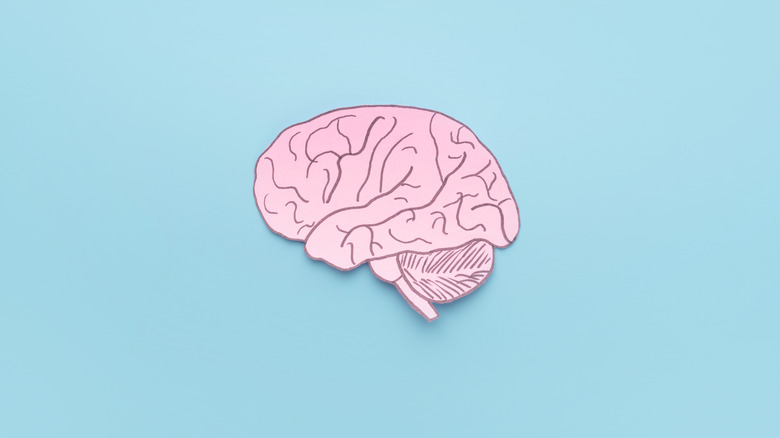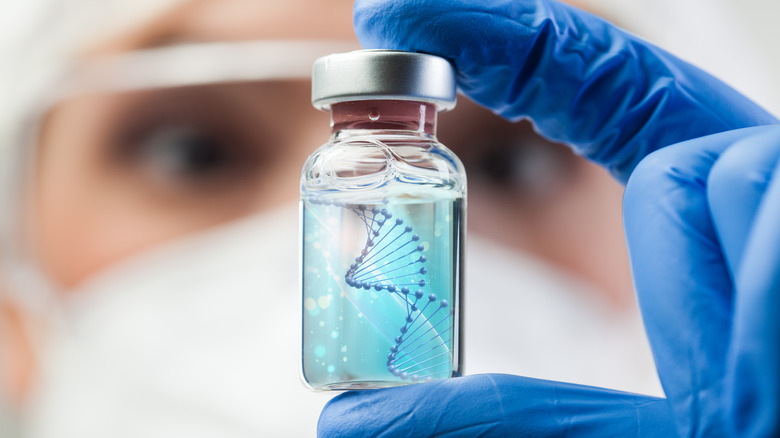What Happens To Your Body When You Are Injured
As we move through life performing our everyday activities – driving a car or riding your bike, even simply walking your dog or going to the grocery store – the potential for accident and injuries is everywhere. When we think of an injury, the first thing that may come to mind is a traumatic injury, when some force or accident suddenly causes a serious problem like a fracture, burn, or open wound (via University of Florida Health). Injury can also occur when a body part is over-used, which is caused by continuous stress over a span of time, such as frequent repetitive motions — think tennis elbow (via St. Elizabeth's Medical Center). Injury is also possible when the body fails due to excessive demand, like if you jump into an extreme sport without stretching or training first. These are called overload injuries. The severity of your injury can range anywhere from minor to critical, and of course, the intensity of the injury also impacts the way your body reacts. Let's explore some of the common and unusual things that can happen to your body when you become injured.
Injury can cause bleeding
Many types of injuries can cause bleeding, which might be external, internal, or both. External bleeding can be the result of minor cuts and skin abrasions, like a scratch from your cat's claw or a scrape on your knee, or more serious injuries like deep or large open wounds. However, it's important to know that injuries can also cause internal bleeding, which is sometimes not visible, according to Better Health Channel.
Oftentimes the body does show signs of internal bleeding — these visible signs include bruising or blood coming from your ears or nose, or showing up in your urine. However, sometimes an internal injury can cause bleeding that stays inside the body and is not obvious. Some signs and symptoms of internal bleeding to look out for include pain where the injury occurred; tightness or swelling in the abdomen; nausea or vomiting; clammy skin; feeling out of breath; or being very thirsty (via Better Health Channel). Minor bleeding from small injuries can usually be treated at home, but if there is excessive bleeding or any signs of internal bleeding, seek medical care right away.
Injuries usually cause pain
Most injuries result in pain — and this discomfort is a signal from your nervous system that something is wrong and you should pay attention to the source of it (via Southwest Health). Pain is usually the first sign of injury. When an injury occurs, the nerves in that area are compressed and your body releases chemicals that cause aches and pains (via Nationwide Children's Hospital). It almost acts like a defense mechanism, communicating to your body to stop moving or using that body part in order to protect it from further harm.
You should take Jane Fonda's catchphrase "no pain, no gain" with a grain of salt — some discomfort while exercising is expected, but pain when working out is an indicator that you should stop. According to St. Elizabeth's Medical Center, if you feel pain during a workout, pause for 2-3 minutes, and if the pain stops, you have no visible swelling, and you still have your full range of motion, you can continue. But if the pain is still there or if you notice other signs of injury, discontinue the activity and take proper care of the affected area.
Injury may cause swelling
While the first sign of injury is usually pain, swelling often comes shortly after. Swelling is a common and natural result of injury, caused by inflammation and an accumulation of fluid and white blood cells to that area (via Nationwide Children's Hospital). Swelling also works as a signal to your body to discontinue use of that area to promote healing. This mechanism sometimes literally immobilizes the injury so that you are unable to move it even if you wanted to, thereby protecting it.
Swelling occurs because the body releases chemicals that prompt white blood cells to come to the area to help remove any injured tissue (via St. Elizabeth's Medical Center). While swelling is normal and necessary, sometimes the body can experience too much of it, which can have negative effects. "Prolonged inflammation and pain can lead to atrophy of the muscles surrounding the joint and a decreased ability to activate the muscles. If not treated appropriately, the swelling can become chronic, or long term," states Lisa Kluchurosky, service line administrator for the Sports Medicine Department at Nationwide Children's Hospital.
To treat swelling, remember the acronym PRICE: Protection, Rest, Ice, Compression, and Elevate. Protection involves safeguarding the injured area from further damage. Rest includes avoiding painful movement. Ice means applying ice to the area, but only for the first 72 hours for 20 minutes at a time — and never put chemical icepacks directly on the skin. Compression with a wrap can help reduce swelling. And finally, elevating the injured body part above the heart will help encourage blood flow away from your extremities. All that said, visit your doctor if the swelling persists for longer than 2-3 weeks. You may need further treatment, such as medication or physical therapy.
Injury may cause shock
When a traumatic event happens, your body can go into shock — this is a medical phenomenon when you experience a decrease in blood circulation and blood pressure, resulting in a reduction of oxygen and nutrients in your body and organs, according to the Better Health Channel. Shock is often the body's reaction to an extreme accident that causes intense aftermath like excessive bleeding, severe burns, spinal injury, or even intense anxiety or fear. It is marked by signs of emotional distress, cool or clammy skin, difficulty breathing, rapid or irregular heartbeat, nausea, dizziness, losing consciousness, or feeling lightheaded, confused, or disoriented. Even though shock is considered a defense response in the body, it can be a life-threatening event if blood flow is not restored to the vital organs of the body. If you suspect someone is experiencing shock after a traumatic event, it is important that you help them seek immediate medical care.
With injury, there is a potential for concussion
Many types of accidents can cause a concussion, which is a brain injury that temporarily inhibits the normal function of that organ (via Mayo Clinic). Concussions are typically caused by a head injury, like hitting your head on the ground or a car steering wheel, but they can also be caused by extreme shaking of the upper body or head. The most common activities that cause concussions include falling and playing contact sports.
One of the toughest things about diagnosing a concussion is that oftentimes the signs and symptoms are not immediate or obvious. Some people may lose consciousness while others do not. Symptoms can include headache, ringing in the ears, nausea, vomiting, fatigue, drowsiness, blurry vision, confusion, amnesia, and dizziness. Other subtle signs involve slurred speech, a delay in answering questions, a dazed look, forgetfulness, concentration or memory issues, sensitivity to light and noise, and many others. Most people completely recover from a concussion, however some symptoms can last for days or even weeks.
Traumatic injury ups your adrenaline
Scientific studies show us that after a traumatic injury, your body releases several stress hormones, including adrenaline. This hormone is released in an attempt to protect you, activating your "flight-or-fight" response, ultimately causing your body to feel increased energy and a reduction or absence of pain. If you have ever sustained an injury and then thought immediately afterward, "I'm fine" or "it wasn't that bad," that is your adrenaline talking. It is quite common for adrenaline to mask the feelings of pain (via Reid Physicians Group).
According to WebMD, adrenaline is released when your body experiences a large amount of external stress. It is meant to help increase your concentration; it doesn't take pain away, but rather helps distract your brain from the pain so that you can focus on survival tactics. Adrenaline sends more blood into your heart and muscles, making you feel more confident and motivated to take on the stressful situation that you are in. These feelings can last for up to an hour after the stressful event is over.
Injury can increase your cortisol
Just like a traumatic injury releases adrenaline, it can also release the hormone cortisol (via BioMed Central). Your body releases cortisol when it experiences any type of stressful event, whether it be acute, chronic, or traumatic. Cortisol is an important hormone that affects many of your organs and body tissues. It helps control your body's stress response, blood pressure, blood sugar, metabolism, sleep, and more (via Cleveland Clinic). High levels of cortisol can cause insomnia, tissue deterioration, a weakened immune system, and inflammation — all of which are not ideal health conditions when you want your body to focus on healing from an injury (via Sports Medicine Weekly). In fact, one article published in Neuroimmunomodulation noted that heightened cortisol levels slow down the healing process.
Therefore, after an injury it's important to be mindful of your cortisol levels and incorporate activities into your life that can help reduce stress. Unfortunately, for many, physical activity, sports, or working out are go-to activities for stress relief — but you may not be able to do those things when injured. It's time to get creative. According to the Cleveland Clinic, there are other ways you can lower your cortisol levels that don't require physical activity, including practicing deep breathing, maintaining healthy relationships, and doing fun things that make you smile and laugh.
Stress and emotional distress
Injuries can be stressful, especially if they occur as a result of a traumatic event. Dealing with and healing from an injury can be equally as stressful, both physically and emotionally. In fact, almost half of people who have a traumatic injury experience acute stress afterward, and this anxiety response causes them to re-live the trauma over and over in memories and dreams (via Physiopedia). Anxiety and stress may also be sparked by certain triggers.
Traumatic injury can be life-altering for many, sometimes with devastating results — many people who experience these types of injuries share that they experience a decrease in quality of life due to psychological distress, physical disabilities, or both. It has also been shown through scientific studies that there is a connection between injury and depression, anxiety, and post traumatic stress disorder (PTSD). Indeed, there is a link between our physical health and mental health: When one suffers, so does the other.
Increased risk of infection
Unfortunately, any time you have a cut or wound there is a risk for infection (via Medical News Today). An infection can happen when a wound is not properly cleaned, and natural bacteria that live on the skin are able to penetrate the skin's normal protective barrier. It is important to monitor any wounds that you have for signs of infection, which include pain, swelling, redness, and sometimes in more severe cases nausea, chills, or fever. Infected wounds often can get worse if untreated and should be looked at by a medical professional.
To prevent wound infection, always make sure to wash a wound injury after it happens. You can do this by rinsing the wound with clean running water for a few minutes, then cleaning the surrounding skin with warm water and soap or alcohol. After it dries, cover it with a Band-Aid or gauze and antiseptic ointment. Depending on the size and severity of your injury, you may need additional medical attention. Your risk of infection increases the older you are, and if you have diabetes, bad blood circulation, a compromised immune system, limited mobility, or nutrient or vitamin deficiencies.
Sepsis and brain impairment
If infection is left untreated, sepsis can occur. Sepsis is inflammation that spreads throughout the entire body (via National Institute of General Medical Sciences), and it is considered a life-threatening emergency. It requires immediate medical attention — if not addressed, it can quickly result in tissue damage, organ failure, and death. According to the Centers for Disease Control and Prevention (CDC), 87% of sepsis cases (or the infection that caused sepsis) started before the patient came into the hospital, and 30% of patients who die in the hospital have sepsis. The CDC recommends that if you or someone you know has an infection that is not getting better or seems to be getting worse, they should seek medical care without delay.
While sepsis is treatable, it has been documented that almost 25% of patients who pull through and recover from it experience some sort of physical or cognitive disability (via National Institute of General Medical Sciences). Though a study published in Scientific Reports suggests that this cognitive impairment may improve over time, more research needs to be done to provide further evidence to back this up.
Severe injuries can cause organ disfunction
If you experience severe injury and survive, you may face many potential complications, including organ failure that spreads through the body. This condition is called multiple organ dysfunction syndrome (MODS) and can be life-threatening (via National Institute of General Medical Sciences). MODS was first noticed in the 1970s when advances in medicine increased survival rates of those who experienced serious injury. More people were able to pull through trauma, but the effects of shock or their injuries took a toll on their physical health and organs. MODS can be caused by shock, due to the lack of oxygen supply to the tissues and organs, but it can happen later during recovery as well. The first organs that are typically affected are the lungs and kidneys, followed by the liver and intestines.
MODS is often seen with infection, especially in those who have abdominal trauma, but not always. However, according to the National Institute of General Medical Sciences, one study found that MODS typically occurred before infection set in. The study, which spanned across 7 years, found that 29% of trauma patients who survived at least 48 hours after their injury experienced MODS.
Traumatic injuries can affect your genes
Most minor injuries won't affect your genes, but severe trauma can cause something called a "genomic storm." One scientific study found that 80% of a patient's "cellular functions and pathways" related to immune activity were altered during the first four weeks after an injury (via National Institute of General Medical Sciences). Ronald G. Tompkins, Professor of Surgery at Harvard Medical School and lead investigator of this scientific study, stated to The Harvard Gazette that "We have discovered there is a highly reproducible genomic response to injury that is essentially the same — no matter the patient's individual genetic background, whether the injury was caused by major trauma or serious burns, or if recovery is rapid or complicated. It is amazing how similar our responses to injuries like serious burns or trauma actually are."
The study found that the gene activity was altered in all trauma patients, despite their differences in healing timelines. The main difference observed was that the gene response was more intense and long-lived in those with longer recovery times (via National Institute of General Medical Sciences).
Repair and recovery
When you're injured, after the bleeding, swelling, and inflammation stages run their course, repair and recovery can take place (via St. Elizabeth's Medical Center). Your body naturally wants to recover and return back to a state of health and balance. Healthy tissue cells move to the injury site and get to work making collagen, a structural protein that helps make connective tissue to repair tissue that is damaged. Depending on the severity of the injury, this process can take up to six weeks, sometimes longer.
After the injury is repaired, it is important to remember that the injury site is still quite fragile; it does not have the same strength of regular, uninjured tissue and skin. Your body tissue needs time to grow stronger. St. Elizabeth's Medical Center recommends that you slowly begin to use the newly recovered injured area, gradually adding stress and weight to it over a six-week period before resuming your typical activities. Since every injury is unique, recovery times vary widely, and it is challenging to be able to predict the date in which you will be fully "healed." It's always a good idea to speak with your doctor about things you can do to support your recovery process, like adding physical therapy or herbs and supplements to your daily routine.

